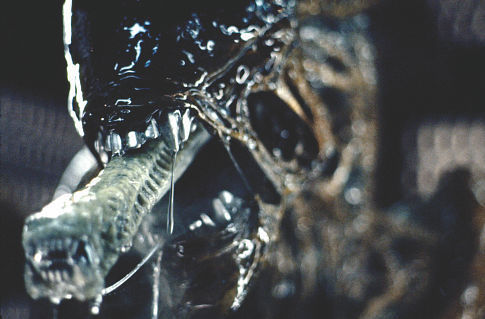There is a human tendency to fear or demonize anything poorly understood and especially anything new. While this is an excellent survival mechanism, unfortunately, it lingers beyond its usefulness in many circumstances. Fear is an excellent tool of control, so very often, it is encouraged by those in authority (or those desiring authority).
What does this have to do with microwaves? Quite a bit! Since no one is trying to control us through microwaves, it would seem people would get over this irrational fear, but instead, it continues to perpetuate itself through the very mystery of microwave technology itself.
I believe we can largely blame x-rays for this. For 30 years, we were assured repeatedly that x-rays were safe: so safe, women of money received them at every prenatal visit and they were available in shoe stores to see the fit of your foot inside the shoe, to ensure a proper and healthy fit.
Of course, we know now that x-rays cause cancer, infertility, pregnancy complications, fetal mutations and birth defects. Why the hell would we trust that any technology is safe after that? Well, you can either be a technophobe and take that route (why are you using a computer then?
Electromagnetic radiation is coming off your screen right now!) or you can do your best to study the information available and make as informed a decision as possible.
Now, the microwave. People have many fears about this device. The first is safety--are microwaves just pouring out of the oven as it goes? No.
1 Not 'pouring out'. Yes, they do leak a tiny amount of microwaves, which are non-ionizing and rodent studies have repeatedly found no damage, even from nearly an entire lifetime of chronic exposure--more than you would be exposed to even if you stood in front of one and cooked in it every day. The material that the microwave is made out of protects you. The risk from microwaves is burns--which you have to find a way to keep the door open to be exposed to (or be inside one).
Now, that brings us to how microwaves cook in the first place: "Microwave ovens cook food with waves of oscillating electromagnetic
energy that are similar to radio waves but move back and forth at a
much faster rate. These quicker waves are remarkably selective,
primarily affecting molecules that are electrically asymmetrical — one
end positively charged and the other negatively so. Chemists refer to
that as a polarity. Water is a polar molecule, so when a microwave oven
cooks or heats up food, it does so mainly by energizing — which is to
say, heating up — water molecules, and the water energizes its
molecular neighbors."
2
It basically bounces around the interior of the microwave in irregular patterns, heating what it comes into contact with. So, it's not like waves pouring around inside and it's why microwaves heat unevenly much of the time.
So, okay, you either are convinced with the science or you're not, that the microwaves are well contained and even when not, they are not cancerous, due to their nature.
The latest myth about microwaves, however, comes from the raw foodists. In pushing their agenda (as we all do), they have perpetuated partial study results that showed that nutrients are leeched in microwaves during cooking. This is true! They are also leeched, in greater amounts, in oven, stovetop, steam and grill cooking, due to the slower nature of the cooking methods. Nutrients are leeched during any cooking at
all into the water it's prepared in.
So, raw foodists have that on their side. But that's not the message that got spread to the public (nor is it the whole story by any means). If you're a raw foodist, good for you. I'm not. I, like all generations of
homo sapien before me
3, like my food cooked. So, for those of us who cook our food, what is the
real story here?
"Several studies have shown that microwave cooking, if properly
used, does not change the nutrient content of foods to a larger extent
than conventional heating. In fact, suggests that there is a tendency
towards greater retention of many micronutrients with microwaving,
probably due to the shorter preparation time. Does not describe
non-thermal effects. The main problem with microwaving is the uneven
heating of the food, which has raised concern regarding microbiological
safety. Microwaving infant formula and breast milk has become
increasingly popular. The content of nutrients and antibacterial factors
in milk are maintained unchanged provided the final temperature does not
exceed 60°C."
4
In fact: Spinach retains nearly all its folate when cooked in a microwave; in comparison, it loses about 77% when cooked on a stove, because food on a stove is typically boiled, leaching out nutrients. Bacon cooked by microwave has significantly lower levels of carcinogenic nitrosamines than conventionally cooked bacon.
5 Steamed vegetables tend to maintain more nutrients when microwaved than when cooked on a stove top. Microwave blanching is 3-4 times more effective than boiled water blanching in the
retaining of the water-soluble vitamins folic acid, thiamin and
riboflavin, with the exception of ascorbic acid, of which 28.8% is lost
(vs. 16% with boiled water blanching).
6
So, in conclusion: microwave cooking is not for every food, certainly (broccoli retains more flavanoids when steamed, for example, but if you're not going to steam it, it will retain more nutrients by microwaving than boiling on the stove--it's best eaten raw, however, for maximum nutrition: but it still contains plenty of nutrients even after cooking), but it is a valuable tool and shouldn't be as feared as it is. At the very least, don't feel guilty about using it once and a while. It's not hurting your food any more than any other method of cooking.










